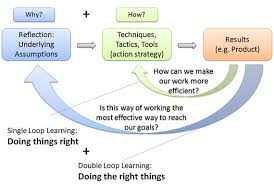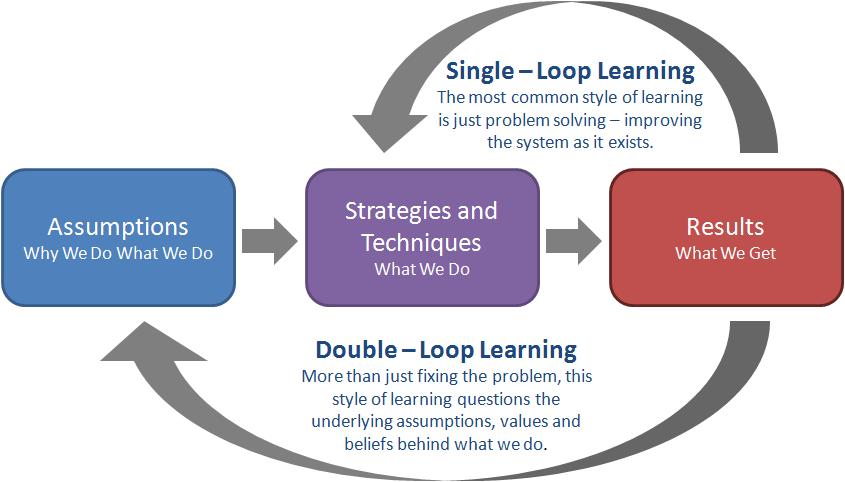Click here to return to Blog Post Intro
In John 18, following the arrest of Jesus Christ, Simon Peter denies knowing and following Jesus three times…then a rooster crows…just as Jesus predicted… The guilt couldn’t have been worse for Peter, who was a passionate follower of Christ… Fast forward to John 21—following Jesus Christ’s death, resurrection, and appearance to his disciples—and notice how Jesus proceeded to reconstruct Peter. He could have lectured him on commitment. He didn’t. In fact, He didn’t address Peter’s behavior at all; He knew He didn’t have to. Instead, Jesus went to the heart of the problem. He realized that good behavior flows from a good heart (conversely…well, you get the picture). Here, Jesus practiced Double-Loop Learning. Three times Jesus forced Peter to examine the root cause of his problem. While Peter’s behavioral problem was important, Jesus knew that a change wouldn’t last unless the root of the behavior was address. His three questions restored Peter’s three previous denials…
How did this impact Peter? He examined. He thought. He evaluated. He addressed his problem seriously…then went on to become a leader of the church. From his writings (in 1 Peter and 2 Peter, specifically), we know that Peter didn’t simply execute a quick fix. When he wrote “with patterns that are alert and fully sober, set your hope” (1 Peter 1:13), he addressed attitudes that determine actions. When he wrote, “rid yourself of all malice and all deceit, hypocrisy, envy, and slander” (1 Peter 2:1), he was not suggesting only that the reader develop new behavior patterns. He knew that—unless a person adjusts their internal constructs—problematic behavior will continue. While people must act appropriately, Peter understood from the Master that behavior is an outgrowth of deeper, fundamental issues.
Single-loop learning tends to be easy. We can teach a person to modify their angry outbursts, for example. But the second loop forces the person to deal with the anger that generates the outburst. The second loop is essential to solving the problem but is more difficult to address. So leaders often stop with the single loop. Proverbs 9:9 notes, “Instruct the wise and they will be wiser still; teach the righteous and they will add to their learning.”
The writer of Proverbs notes that wise people learn what they need to know. Argyris clarifies the issue by pointing out that the wise go twice around the learning loop!
Out of This World Leaders are committed to God’s best for their followers and learn the valuable lessons of Double-Loop Learning. First time around the loop—behavior. Second time around the loop—values and attitudes that drive behavior.
May you dig deeper, reflect more, and examine whether you’re doing the right things as you shoot for the stars!




